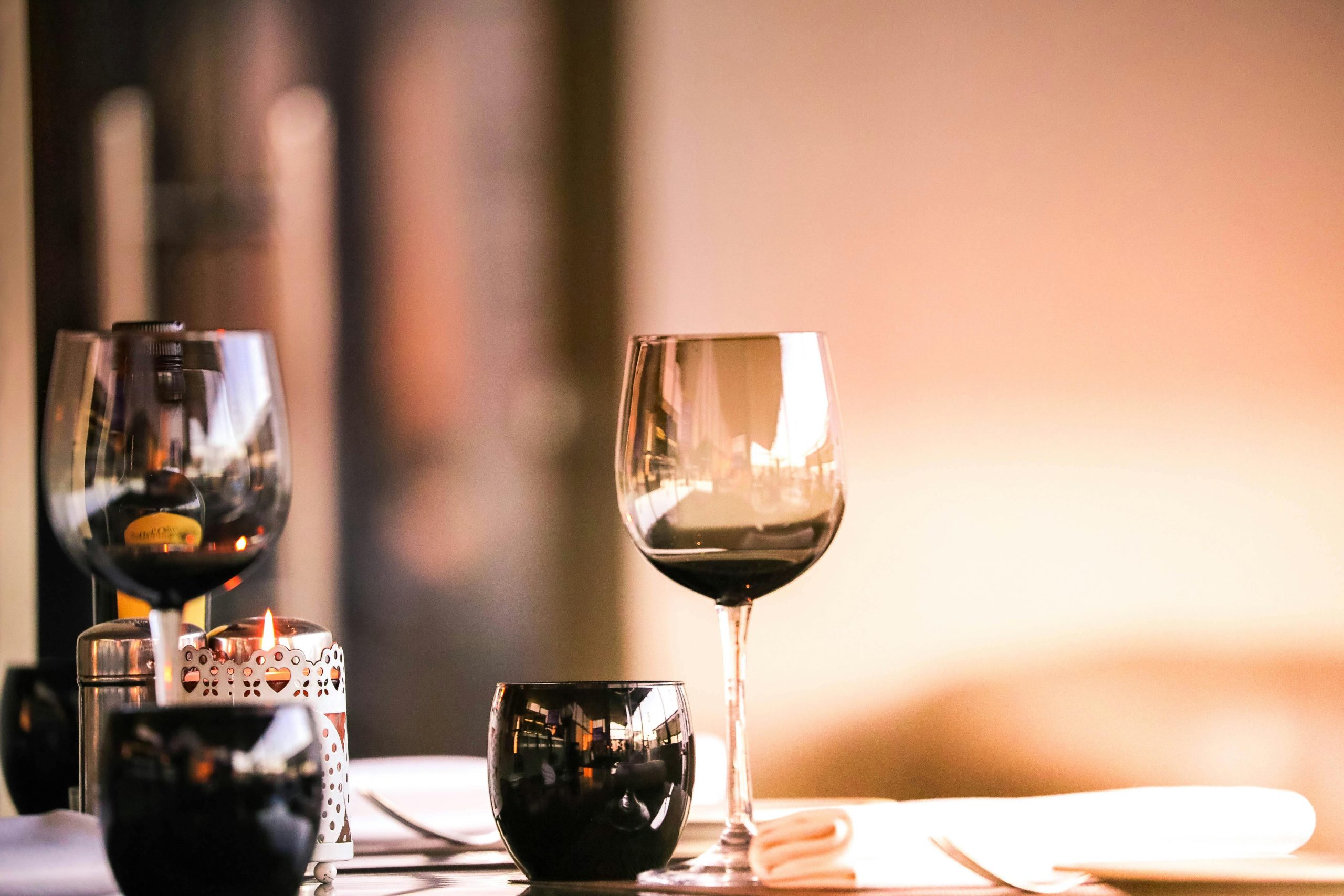
Wine is more than a drink. It’s an experience. Whether you’re at a fancy dinner party, a casual get-together, or a wine tasting event, knowing a bit about wine etiquette can help you feel comfortable and confident. Don’t worry, you don’t need to become a sommelier overnight! I’ll guide you through some key tips and tricks that will keep you from any awkward wine faux pas, all while keeping it fun and easy to understand.
Let’s dive into the world of wine etiquette, where you’ll learn everything from how to hold a glass to how to gracefully navigate a wine tasting.
1. How to Hold a Wine Glass: It’s Not as Simple as it Looks!
You might think holding a wine glass is no big deal, but it actually makes a difference. Most people instinctively want to grab the bowl of the glass like they would with a regular drink, but here’s the thing: your hands are warm, and that can affect the wine’s temperature. Especially with whites and sparkling wines, serving temperature can significantly impact the taste.
The right way? Hold the glass by the stem. This keeps the wine at its proper temperature and gives you that elegant, confident look.
If you’ve got a heavy red wine and are really tempted to cradle the bowl (it happens), remember this: holding the glass by the stem is like wearing shoes to a wedding—it just feels right.
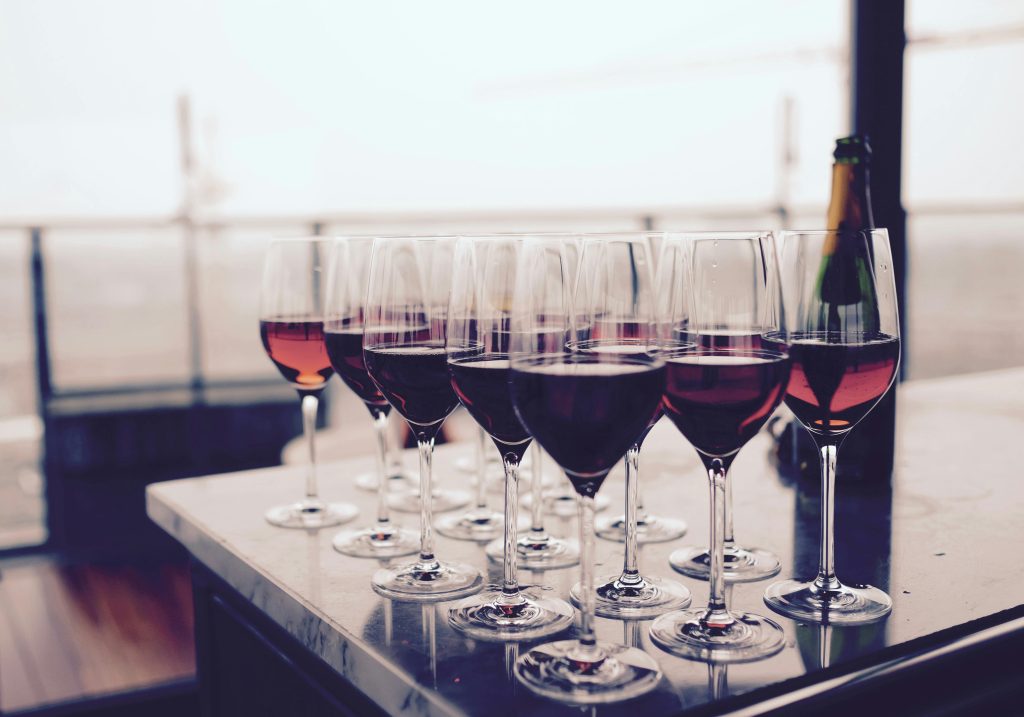
2. Pouring Wine: A Fine Line Between Generous and Overboard
Ever find yourself in a situation where you’re asked to pour wine for others? Suddenly, the pressure’s on. How much do you pour? Too little and it looks stingy, too much and the wine might spill everywhere.
Here’s a simple rule: pour your wine about one-third full. This is more than enough to swirl the wine, allowing it to breathe and release those wonderful aromas.
For sparkling wines like Champagne, it’s best to pour in small increments. Start with a little, let the bubbles settle, and then add more. That way, you don’t end up with a bubbly overflow, leaving you with sticky hands and spilled wine—definitely not classy.
3. Swirling Your Wine: Channeling Your Inner Wine Expert
Swirling isn’t just for show, though it does make you look like you know what you’re doing! The act of swirling helps aerate the wine, releasing its aromas. It allows the oxygen to mix with the wine, opening it up and allowing you to smell (and eventually taste) all those wonderful notes of fruit, flowers, spices, and more.
Here’s the trick: keep the base of your glass on the table and move your hand in a small circular motion. This reduces the risk of sending wine flying everywhere, which can be… well, embarrassing. Swirling is essential before that all-important sniff. Which brings us to…
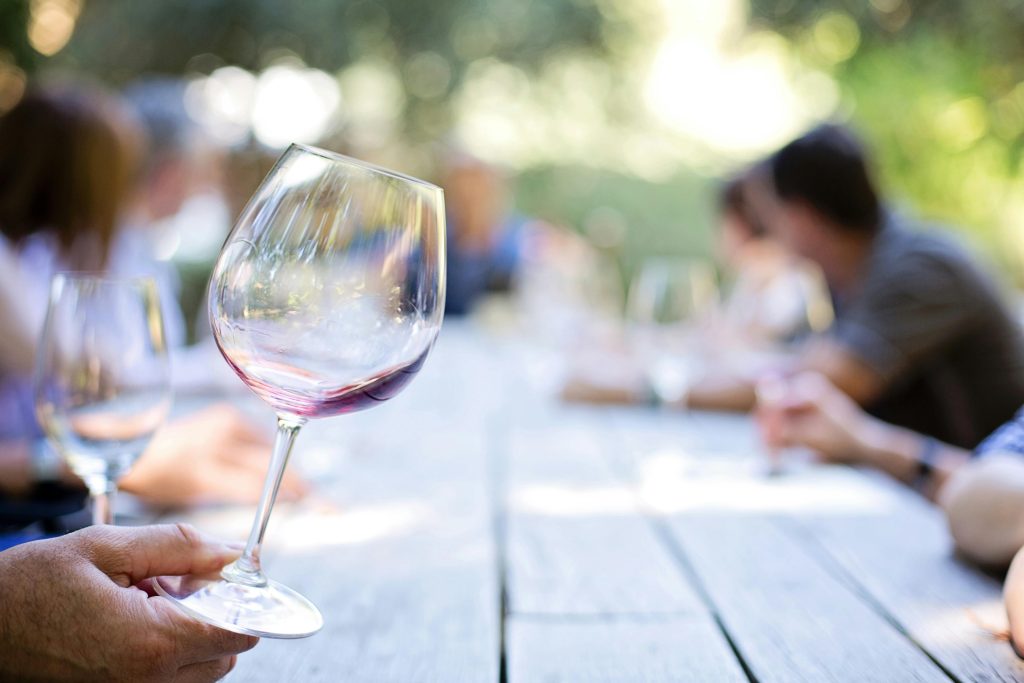
4. The Sniff Test: Get Your Nose in There
Taking a good sniff of your wine before drinking it might seem a bit pretentious, but it’s a key part of the wine-drinking experience. Your sense of smell is closely linked to your sense of taste. So, when you take a sniff, you’re actually preparing your brain for what’s to come when you finally sip.
Stick your nose into the glass (yes, really!) and take a deep breath. What do you smell? Maybe blackberries, or hints of oak, or even spices? Don’t worry if you’re not picking up all the different notes. It takes practice, and everyone’s sense of smell is different.
5. Sipping Like a Pro: Taste the Wine, Don’t Guzzle It
When it comes to tasting wine, it’s not about gulping it down like water. Wine is something to be savored. Take a small sip, and let it roll around in your mouth before swallowing. This allows you to taste all the different flavors at play.
Wine typically hits different parts of your palate. You might taste sweetness first, then acidity, then bitterness, depending on the wine. For extra flair, you can slurp a little air as you sip to release even more flavors (but only do this if you’re feeling confident—it’s not something you want to try for the first time at a formal dinner!).
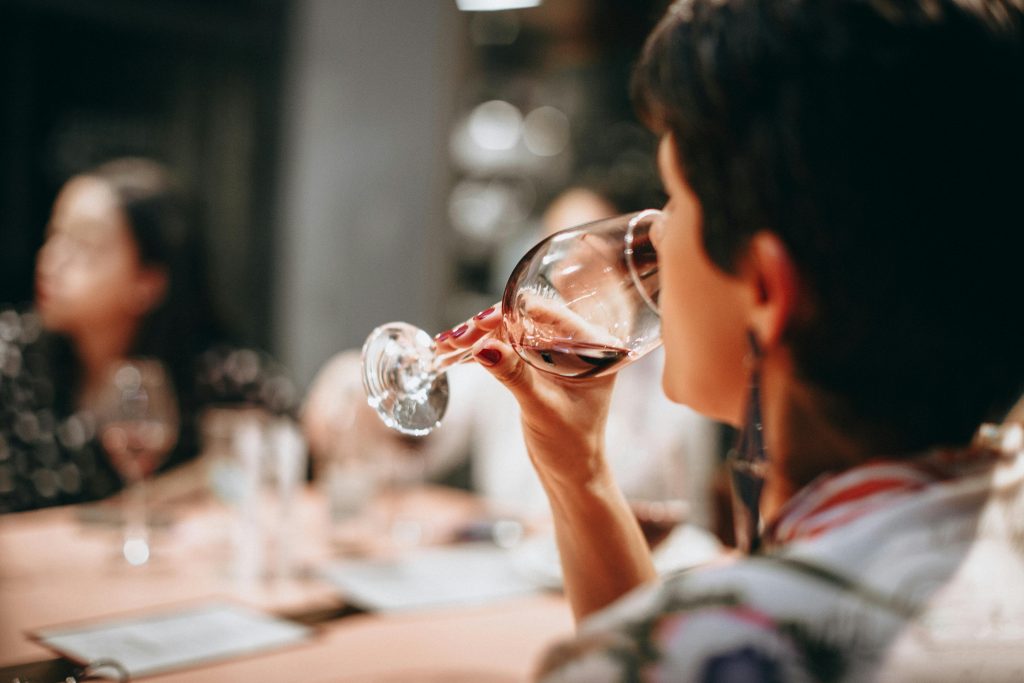
6. Wine and Food Pairing: What’s the Big Deal?
You’ve probably heard people talk about pairing wine with food, but what’s the big deal? In a nutshell, the right wine can enhance the flavors of your food, and vice versa. Think of it as a symphony: each component (wine and food) works in harmony to create something even better together.
- Red wine with red meat: A classic for a reason. The boldness of a red wine complements the richness of red meats like steak or lamb.
- White wine with fish and chicken: Lighter meats pair better with lighter wines. A crisp white wine can enhance delicate flavors.
- Sweet wines with spicy food: Counterintuitive, right? But the sweetness in wines like Riesling can cool down the heat in spicy dishes.
- Dessert wine with dessert: Don’t forget about dessert wines! A glass of Sauternes or Moscato with a sweet treat can be the cherry on top of your meal.
Don’t get too caught up in the rules, though. If you love a certain wine with your meal, that’s all that matters!
7. Tasting Events: How to Make the Most of a Wine Tasting
Wine tastings are all about exploration and enjoyment. They can seem intimidating if you’ve never been to one before, but I promise, they’re fun once you get into the swing of things. Here’s how to make the most of your tasting experience:
- Start light, go bold: Taste lighter wines (like whites) before moving to heavier ones (like reds). This way, your palate isn’t overwhelmed right at the start.
- Spit or swallow?: At a tasting, you might be given the option to spit out the wine after tasting. This keeps you from getting too tipsy too quickly. Don’t feel pressured to spit if you don’t want to, but if you do, it’s not rude—it’s just part of the experience.
- Ask questions: Don’t be afraid to ask about the wine, the vineyard, or the winemaking process. The more you know, the more you can appreciate what’s in your glass.
8. Ordering Wine at a Restaurant: Impress Without Stress
Picture this: You’re at a nice restaurant, the wine list is handed to you, and suddenly it feels like you’ve been asked to solve a complex math problem. Don’t panic! Here’s how to handle ordering wine with ease:
- Know your budget: Before diving into the wine list, decide how much you’re willing to spend. There’s no shame in sticking to a budget!
- Ask for help: Don’t hesitate to ask the sommelier or waiter for advice. Tell them what kind of wines you usually like, and they can guide you in the right direction.
- Try something new: A restaurant wine list is a great opportunity to step out of your comfort zone and try a wine you wouldn’t normally pick. If you love red wine, ask for a suggestion on an interesting white, and vice versa.
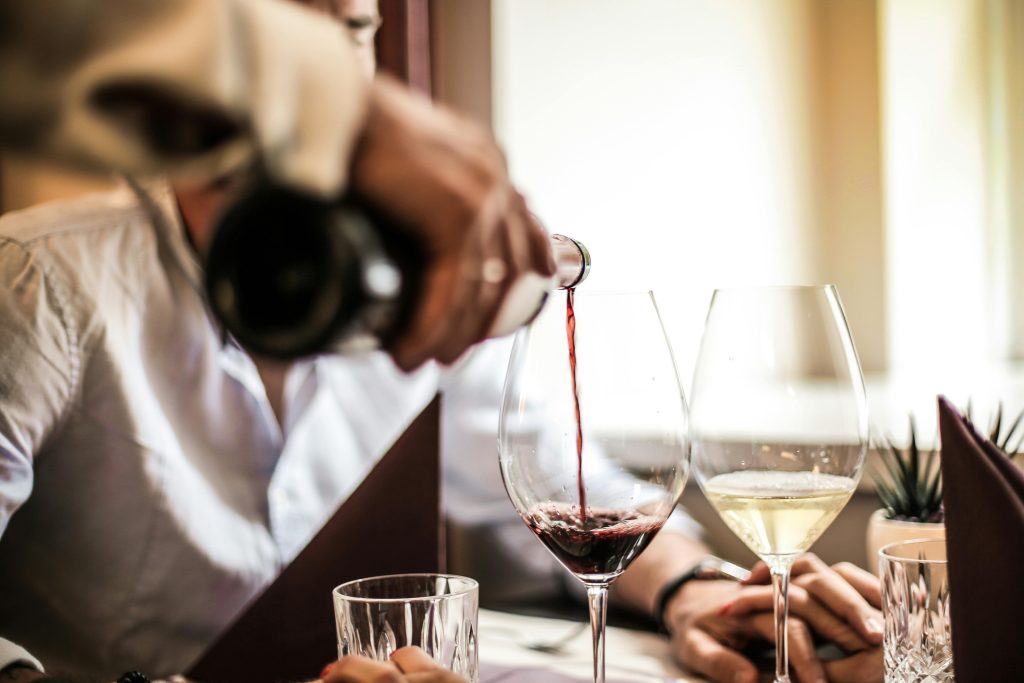
9. Toasts: The Art of Raising Your Glass
If you’re at a dinner party or wedding, chances are a toast will be made at some point. Knowing how to handle this moment with grace can make you feel like a social star.
- Don’t clink too hard: When clinking glasses, go for a gentle touch. There’s no need to smash your glass against someone else’s.
- Make eye contact: It’s a small detail, but maintaining eye contact when you toast adds a personal, confident touch.
- Wait your turn: If you’re part of a group toast, let everyone raise their glass before you dive into your drink. It’s all about being in sync with the moment.
10. Wine Gifts: What to Bring to a Dinner Party
Bringing wine to a dinner party can be a thoughtful gesture, but how do you know what to pick? Easy—think about the occasion.
- For a formal dinner: A bottle of red or sparkling wine usually does the trick. Champagne or a full-bodied Cabernet Sauvignon can make a great impression.
- For a casual get-together: Don’t overthink it. A fun Rosé or a chilled white can be perfect.
- For a wine lover: Choose something a little unique. Maybe a wine from an under-the-radar region, or a vintage bottle they wouldn’t typically find at the grocery store.
11. Wine Faux Pas: What to Avoid
Let’s finish up with a few “don’ts” that can save you from any awkward moments:
- Don’t fill the glass to the brim: It may seem generous, but it makes swirling impossible and looks amateur.
- Don’t sniff the cork: This one’s an old myth. Smell the wine, not the cork!
- Don’t rush: Wine is meant to be enjoyed, so take your time, savor each sip, and enjoy the experience.
Conclusion
Navigating social situations with confidence when wine is involved doesn’t have to be daunting. With a few simple tips and a touch of wine knowledge, you’ll look and feel like a pro, whether you’re swirling a glass at a tasting, ordering at a restaurant, or making a toast at a party.
Remember, wine is about enjoyment. Relax, have fun, and don’t overthink it. The best part of wine etiquette is that it helps you enjoy the experience without any stress. So next time you’re at a wine event or dinner party, you can feel confident, knowledgeable, and ready to savor every moment.